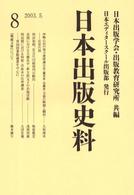Full Description
Since the mid-20th century, many postcolonial states have engaged in multiple constitution-making exercises, with the turnover in written constitutions often due to coups or internal conflict. Conversely, people have resisted authoritarian rule through alternative constitution-making. The reality that most countries have had numerous official and unofficial constitutional texts begs the question: How do past constitutions matter in the present?
This volume explores the social life of constitutional legacies, or how past constitutions matter. Using the case of Myanmar, Professor Crouch demonstrates that constitutions are a palimpsest of past texts, ideas, and practices, an accumulation of contested legacies. Through constitutional ethnography, it traces Burma/Myanmar's modern constitutional history from the late colonial era through its postcolonial, socialist, and military regimes.
The Palimpsest Constitution captures the idea that contemporary debates about constitutional reform are informed by the contested legacies of the past. In Myanmar, the military insists on the endurance of its 2008 Constitution while pro-civilian actors resist military rule through alternative constitution-making endeavours. Offering a sociological view of constitutional endurance, the book demonstrates how the social life of constitutions is central to the struggle for constitutional democracy and civilian rule in Myanmar.
Contents
1: Introduction
Part I. The Palimpsest Constitution under Colonial Rule
2: Laying the Foundations of Constitutional Legacies: War, Occupation, and Law
3: Resisting the Legacies of Imposed Constitution-making: Codification, Martial Law, and Executive Safeguards
Part II. The Palimpsest Constitution in the Post-colony
4: Subverting Colonial Constitutional Legacies: Independence, Social Democracy, and a Coup
5: Contesting the Postcolonial Constitution: Religion, Federalism, and Anti-constitutional Crimes
6: Rejecting the Postcolonial Constitution: Socialist Legality, the Party, and People's Duties
7: Scripting New Constitutional Legacies: Military Constitution-makers, Resistance, and Reform
Part III. The Palimpsest Constitution between the Military and the Courts
8: Coopting the Legacy of the Writs: The Supreme Court, Rights, and Judicial Independence
9: Repurposing Legacies of Judicial Review: The Constitutional Tribunal, the Military, and the Coup
10: Conclusion
Appendix 1: Constitutional Ethnography
Appendix 2: List of Characters







